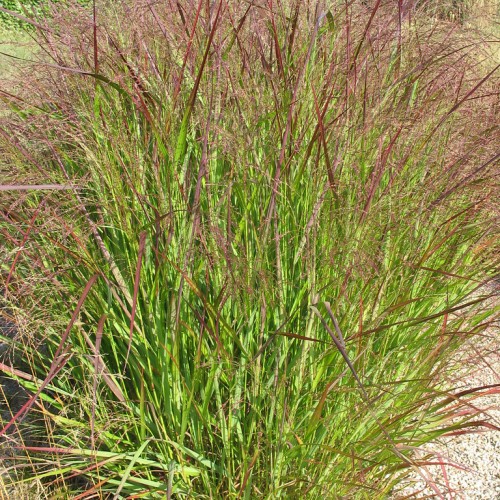
switch grass
Panicum virgatum 'Squaw'
Cycle:
Perennial
Watering:
Frequent
Hardiness Zone:
5 - 9
Flowers:
Flowers In Summer
Sun:
Full sun
Soil:
Humus rich, Rocky , gravelly , dry, Well-drained
Fruits:
Fruits In Autumn Ready In
Leaf:
Yes
Growth Rate:
High
Maintenance:
Low
Drought Tolerant:
Yes
Salt Tolerant:
Yes
Care Level:
Moderate
watering
Switch Grass (Panicum virgatum 'Squaw') should be watered deeply and infrequently. During the growing season, the switch grass should be watered approximately once a week as long as the soil is well-draining and does not become saturated. During periods of extreme heat or drought, the plant may require additional water. In the winter, while the switch grass is dormant, it should not need to be watered at all.
sunlight
Switch grass (Panicum virgatum 'Squaw') prefers full sunlight for best growth and should get at least 8 hours a day in order to do well. It is a warm-season grass, meaning it will be most active during the summer and early fall months. Therefore, it is important to provide as much direct sunlight as possible during these months and throughout the growing season in order to keep the plant healthy. Although it does need plenty of sunlight, switch grass (Panicum virgatum 'Squaw') prefers consistent exposure as opposed to too much intense sun all at once. Aiming for 6-8 hours of sunlight per day is an ideal amount for this species of grass. When possible, try to spread out the direct sunlight exposure throughout the day instead of giving it all at once.
pruning
Switch grass (Panicum virgatum 'Squaw') should be pruned in the late winter or early spring before new growth begins. Pruning should be done lightly, removing only a few inches off the top. This will help to encourage more vigorous growth and bushier plants. Additionally, dead or diseased areas should be removed at this time. Switch grass should not be heavily pruned, as this can create weak, sparse plants.
